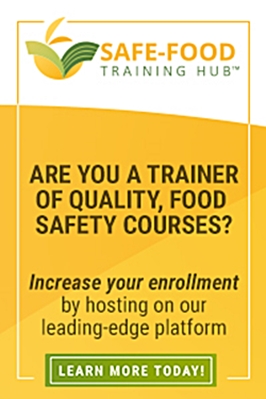‘It’s about making it your culture not just training’
By: Stuart Baker – Food Hygiene Asia
www.foodhygieneasia.com
www.facebook.com/foodhygieneasia
You are taught from a young age to use soap and warm water to wash your hands, to follow use by or best before dates, to wrap items that you’ve opened before placing in the fridge and to cover your mouth when you cough or sneeze.
 Some of the things we take for granted aren’t necessarily the norm for everyone. In some countries. it’s common practice to buy cooked food from the market, eat at makeshift restaurants that appear nightly by the road and purchase food without packaging let alone use or sell by dates.
Some of the things we take for granted aren’t necessarily the norm for everyone. In some countries. it’s common practice to buy cooked food from the market, eat at makeshift restaurants that appear nightly by the road and purchase food without packaging let alone use or sell by dates.
People may live in rooms with only cold water. In their toilet, they usually have a large bucket they fill with water and a bowl to act as a shower. A wooden chopping board and one knife are used for everything from cutting chicken to cutting up vegetables with no more than a quick rinse if that under cold water. Plates, bowls and cups with chips and cracks are constantly used rather than throwing them away.
These are the living conditions and common practices of the staff manning the kitchens. They have never stayed in a hotel before or eaten in a restaurant with good hygiene practices. However, these are the people working with the responsibilities of producing the food in small family run restaurants to top 5 star hotels and restaurants across many of the so-called developing world.
Let’s look at five important areas where culturally the actions and beliefs are the norm but far from correct or even barely sufficient good food practices. Most of these practices could easily produce any number of foodborne illnesses:
• Preparation of food: Old wooden cutting boards are the norm with several severe grooves and used for the preparation of all food types. The washing and sanitizing of these boards are completely missed.
• Hand washing: Most people only have cold water at home. Often, this water is stored outside in large water urns for days, and weeks on end exposed to the elements. This water is used for washing hands, showering, washing-up and almost everything else.
• Storing food in the fridge: Most foods are stored uncovered. The use of foil, Clingfilm or plastic containers are almost unheard of. Meats are not stored on the bottom shelves.
• Thawing of food: Most food is bought fresh from the market . With the introduction of fridges and freezers, meat is now being stored to last longer. There is almost no understanding of the correct methods of defrosting as the meat is almost always being left in a bowl or on the side for several hours. On many occasions bowls or plates have both chicken, beef and pork with the blood mixing.
• Reheating: Food is often produced in volume for the family and can be reheated several times throughout the day and or over the next few days. The practice involves leaving food on the stove or on the table exposed to the elements and in the Danger Zone. When reheated, the food is barely warmed through.
The establishments who are training their staff which are few and far between are battling against culture. It is difficult to make someone work one way at work when they live a completely different way at home. Government initiatives are needed to teach school children of the implications and benefits of good food safety as part of their culture.

Categories: Trends in the Industry
Tags:



